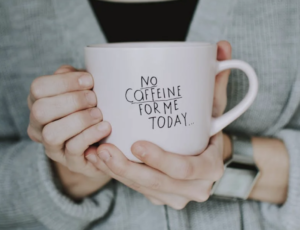 It’s been called the fourth and fifth meal, sometimes the sixth meal.
It’s been called the fourth and fifth meal, sometimes the sixth meal.
Let’s say 80-90 years ago there was a belief that snacking was not healthy. Grandma’s voice? “It makes you fat, go outside.” Was obesity a problem back then? The idea that eating more often would make us gain weight was the mantra, but what in the world is going on today? Eating snacks between our three meals will make us thinner? What? Smaller meals will cut the fat? Say again? Eat more during the day, your main meals will naturally be smaller? Come on? Your body systems must always be working, never rest! Huh? It’s more than likely that eating no snacks might cut the profits of those Big Food companies, so eat up. Seriously?
Sometime starting in the 1920s the big food companies faced a dilemma. They needed to sell more food to be more profitable. But with only three meals in a day, a harbinger of American society, there was a limit on the amount of food sold. It was a brilliant lie, another one of the food industry, to introduce new “eating opportunities”, or the snack.
A whole new category of cheap, easy and non-spoiling items to eat was created. Like a dinner bell summons, in trots the happy refined carbohydrate to overpower real food. Over the years, Big Food was able to convince us that snacking was not only acceptable, but it was oh so healthy. Now it’s our bad health dilemma. In part, thanks to the Snack Food Association, founded in the US in 1937, representing over 400 companies worldwide, including snack industry suppliers. SFA says it is committed to providing premier educational resources, connection opportunities, and advocacy for the ever-evolving snack industry.
Heck yeah, it’s evolving and they’re doing a great job at killing us, especially during the Super Bowl.
Each year, the Super Bowl scores a touchdown for the snack industry, altering consumer purchasing behaviour during the week leading up to the big game. In 2017, American consumers purchased over $370 million worth of snacks during Super Bowl week, a 20 percent increase from the week prior. And right there is the SFA. No Super Bowl party is complete without dips. The refrigerated and shelf-stable dips categories posted $37.5 million in sales, an increase of 43 percent from the previous week leading up to the Super Bowl, according to the association. With over $104 million in sales during Super Bowl week, the tortilla/tostada chips category increased by 35 percent as a result of pregame shopping, compared to a smaller but still significant 17 percent increase for the lowly potato chip.
No surprise given the 90-year history of snacking and Big Food influence.
In The Big Fat Surprise: Why Butter, Meat and Cheese Belong in a Healthy Diet, authored by Nina Teicholz, she reports that Big Food companies were encouraging people to choose “snacks from other food groups such as, low-fat cookies, low-fat crackers, unsalted pretzels, hard candy, gum drops, sugar, syrup, honey, jam, jelly, marmalade, something the American Heart Association also recommended in 1995.” To avoid fat, people should eat sugar, the AHA advised.
And we did and it was labelled the “SnackWell’s phenomenon,” referring to the fact that people seeking to be health-conscious by reducing fat would mush their way through bags of eye-catching nonfat or low-fat cookies full of refined carbohydrates. We were convinced that it’s okay to devour mass quantities of “light” chips or cookies, negating the intended calorie savings. This Snackwell’s (or Snackwell) effect takes its name from the Nabisco brand of snacks, which were originally marketed as low-fat products.
In two weeks: Part Two: Your digestion says, “No snacking.”
 Richard Tardif is an author, personal fitness trainer, and an award-winning journalist writing and teaching about health and wellness for over 20 years. Stop the Denial: A Case for Embracing the Truth about Fitness, published by Smiling Eye Press, is his debut book. Email at richard@richardtardif.com
Richard Tardif is an author, personal fitness trainer, and an award-winning journalist writing and teaching about health and wellness for over 20 years. Stop the Denial: A Case for Embracing the Truth about Fitness, published by Smiling Eye Press, is his debut book. Email at richard@richardtardif.com






